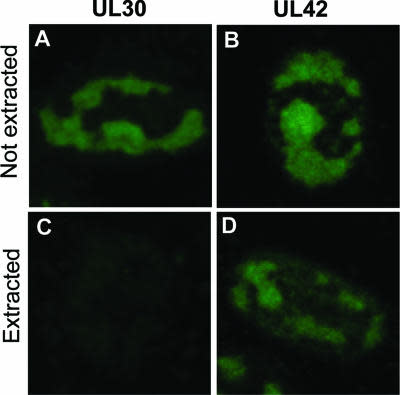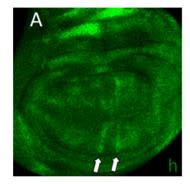
Cat. #154097
CDR KO Mouse
Cat. #: 154097
Sub-type: Mouse
Availability: 6-8 weeks
Disease: Chronic Lymphoblastic Leukemia
Model: Conditional KO
This fee is applicable only for non-profit organisations. If you are a for-profit organisation or a researcher working on commercially-sponsored academic research, you will need to contact our licensing team for a commercial use license.
Contributor
Inventor: Riccardo Dalla-Favera
Institute: The Trustees of Columbia University in the City of New York
Tool Details
*FOR RESEARCH USE ONLY
- Tool name: CDR KO Mouse
- Tool sub type: Mouse
- Disease: Chronic Lymphoblastic Leukemia
- Model: Conditional KO
- Conditional: Yes
- Conditional description: Conditional Knockout mouse of the entire chromosomal region m14qC3/h13q14 upon recombination by Cre-recombinase
- Description: Deletion of chrosomal region 13q14 represents the most comon genetic abberation in B-Cell chronic lymphoma. Deletion of human chromosomal region 13q14 (mouse 14qC3) represents the most common genetic aberration in B-cell chronic lymphocytic leukaemia (CLL), a neoplasm of mature B lymphocytes. 13q14 deletions are commonly large and heterogeneous in size and affect multiple genes. Contained within the 13q14 region is the 0.69 megabase-large genomic region telomeric to the MDR called the common deleted region (CDR). The CDR encompasses the DLUE2 gene, miR-15a/16-1 cluster, DLEU1 gene, DLEU7 gene and RNASEH2B gene. Deletion of the CDR in this model organism recapitulates the full spectrum of CLL-associated lymphoproliferations in humans. Knockout of the CDR allele was induced in B-cells by crossing with CD19-Cre mice.
- Genetic background: The 2 targeting vectors used to flank the CDR with loxP and frt sites were derivatives of pEmod227 containing either a phosphoglycerate kinase (PK)neomycin-resistance (5'tag) or a PK-hygromycin-resistance (3'tag) poly(A) cassette, the herpes simplex virus thymidine kinase gene (both tags), a loxP and a frt site (both tags), a promoterless gene encoding enhanced green fluorescent protein (eGFP) and immediately preceding a triple simian virus 40 poly(A) site in 5'tag, a PK promoter (3'tag), and multiple unique restriction sites for cloning 14qC3 segments corresponding to the homology arms. Successively inserted into the cloning sites of the corresponding 5'tag and 3'tag vectors were 2 DNA fragments of the 129/Sv-14qC3 locus. The linearized 5'tag vector was electroporated into W9.5 embryonic stem (ES) cells derived from 129/SvEvTac. Correctly targeted ES cell were then electroporated with the linearized 3'tag vector. Chimeras were obtained after injection of the targeted ES clones into blastocysts derived from C57BL/6 mice. From the chimeras, mice were obtained with the loxP-flanked CDR allele in germline CDRfl/+, as determined by Southern blot analysis.
- Zygosity: Homozygous
- Strain: C57BL/6
- Production details: The 2 targeting vectors used to flank the CDR with loxP and frt sites were derivatives of pEmod227 containing either a phosphoglycerate kinase (PK)â neomycin-resistance (5â˛tag) or a PK-hygromycin-resistance (3â˛tag) poly(A) cassette, the herpes simplex virus thymidine kinase gene (both tags), a loxP and a frt site (both tags), a promoterless gene encoding enhanced green fluorescent protein (eGFP) and immediately preceding a triple simian virus 40 poly(A) site in 5â˛tag, a PK promoter (3â˛tag), and multiple unique restriction sites for cloning 14qC3 segments corresponding to the homology arms. Successively inserted into the cloning sites of the corresponding 5â˛tag and 3â˛tag vectors were 2 DNA fragments of the 129/Sv-14qC3 locus. The linearized 5â˛tag vector was electroporated into W9.5 embryonic stem (ES) cells derived from 129/SvEvTac. Correctly targeted ES cell were then electroporated with the linearized 3â˛tag vector. Chimeras were obtained after injection of the targeted ES clones into blastocysts derived from C57BL/6 mice. From the chimeras, mice were obtained with the loxP-flanked CDR allele in germline CDRfl/+, as determined by Southern blot analysis.
Handling
- Shipping conditions: Embryo/Spermatoza- Dry Ice
Target Details
- Target: Common deleted region of h13q14/m14qC3
References
- Lia et al. 2012. Blood. 119(13):2981-90. PMID: 22174151.
- Functional dissection of the chromosome 13q14 tumor-suppressor locus using transgenic mouse lines.




